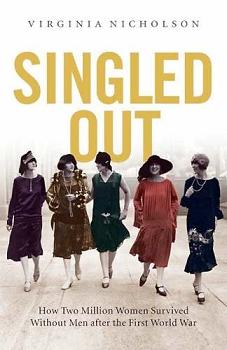
Singled Out
Virginia Nicholson
312 pages including index
published in 2007
I found Singled Out in the Middelburg library and picked it up because it looked like the sort of book Sandra would’ve enjoyed reading. She had always been interested in social history, especially of Britain between the wars and of the role women played in these years. Sandra had actually been the one who first pointed out to me why there were so many spinsters in twenties and thirties detective stories, all those women living alone in bedsit rooms or sharing a cottage together. That was something I had noticed but assumed just to have been some sort of convention of the genre, rather than something real reflected in fiction.
But that was exactly what it was, as the interwar period was the period of the “Surplus Women”, two million women for whom there was no and would be no husbands, with the “flower of British manhood” cut down in the mud of Flanders. The First World War had left hundreds of thousands British men dead and many more crippled for life and a whole generation of women without enough husbands to go around. Granted, as the raw statistics prove this was not a new situation, as in Victorian times too this had been the case, but this was the first time this gender imbalance was both large and out in the open. This time it had hit the middle and upper classes disproportionally and therefore was widely commented on in the media and felt by those women themselves. What’s more, it came at a time of huge societal changes and anxiety and, as Nicholson shows, these socalled “surplus women” played a huge role in making British society more equal to women in general.
No Comments